The only plane route to Iquitos, Peru, from the United States used to require a stop in Lima, though Lima is a good 600 miles south of Iquitos. Not too long ago Copa airlines initiated another route to Iquitos. This new route stops in Panama City, which is more or less actually on the way. So when one is flying to Iquitos to look for reptiles and amphibians, one might consider stopping over in Panama to look for reptiles and amphibians also. Lorrie Smith and I chose that plan on our way to our herping trip in Peruvian Amazonia.
I got excellent advice from Chris Williams (gretzkyrh4 at Field Herp Forum) about where to spend our limited herping time in Panama. Taking that advice into account, Lorrie and I decided to head for El Valle de Antón, and to try to meet up with Mario Urriola while there. Mario runs the local Serpentarium and is a very knowledgeable wildlife guide for the area.
We stayed at the Hotel Campestre, which has comfortable rooms, good food, and attractive grounds. It also backs right up to a forest with hiking trails, so it is altogether a fine place to stay for a herping trip. The main building is surrounded by wide grassy lawns. Perhaps they keep the fer-de-lances near the rooms down to a minimum.
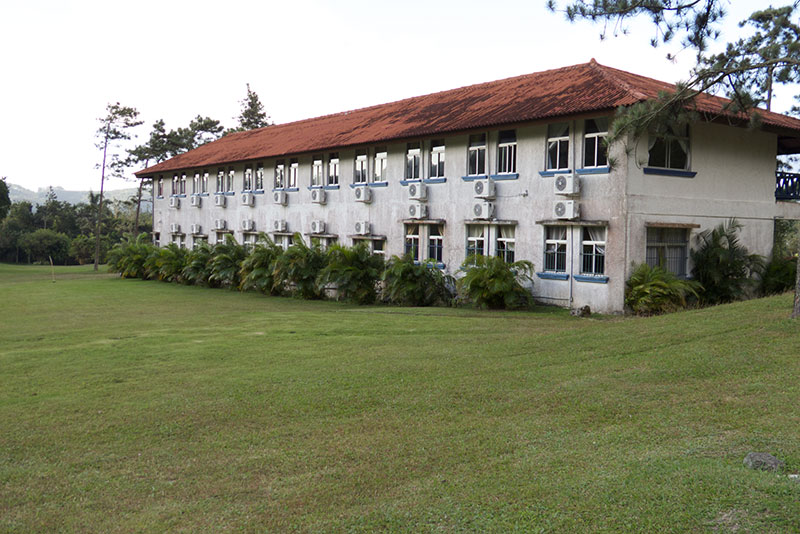
Here's a view of the forest behind the hotel. The building is perhaps for hotel staff.
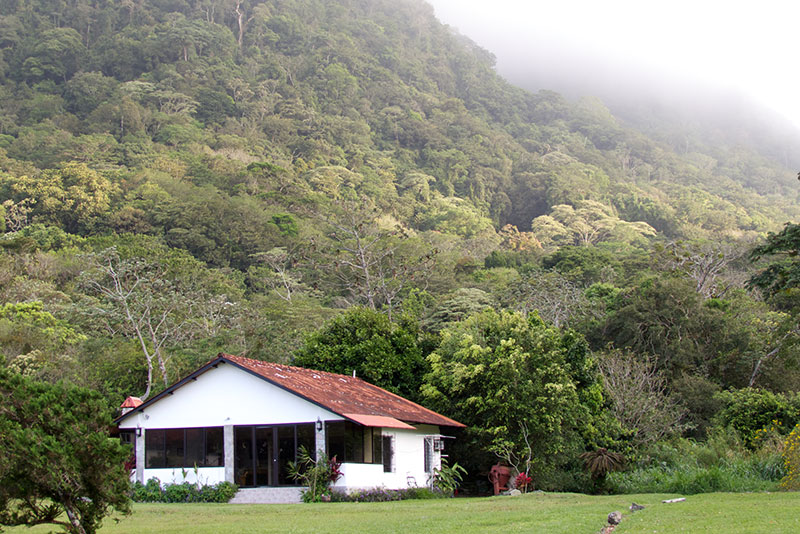
The grassy area is wide enough that a helicopter could land on it. And for some reason that happened. Lorrie, being a pilot herself, was irresistibly drawn to the flying machine, and she chatted with its pilot for awhile. Hotel Campestre, being conveniently located, didn't seem like the kind of place you would need to take a helicopter to, but maybe some people just prefer traveling in helicopters all the time.

The first signs of herpetological activity were around the hotel itself. At night, as you might expect, geckos clambered all over the walls. The big ones were as skittish as big wall geckos usually are, and I ended up not getting any photos of them. But here's a tiny baby, apparently enjoying the company and/or taste of some very small ants. Thanks to Chris Williams and Dick Bartlett for identifying this as a Mourning Gecko, Lepidodactylus lugubris. I had misidentified it as Hemidactylus mabouia originally. Chris told me that El Valle has the first reported occurrences of Mourning Geckos in Panama.
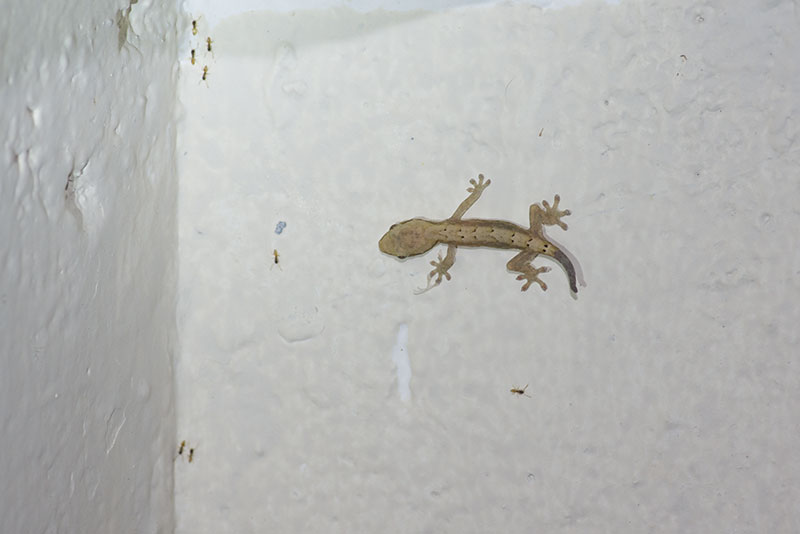
A large shallow decorative pond out front housed a healthy population of Cane Toads (Rhinella (Bufo) marina) both day and night.
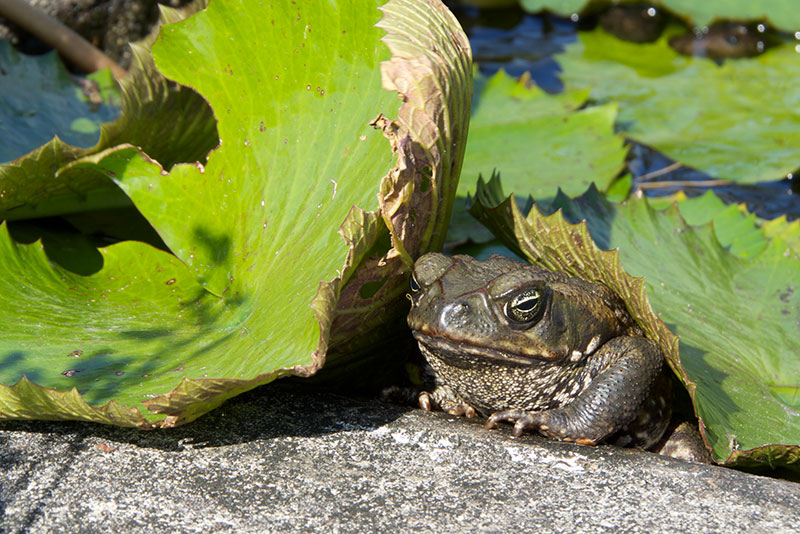

An adult female Common Basilisk (Basiliscus basiliscus) soaked up the last warmth of the day on a concrete bridge support. I was surprised to only see this one basilisk in the two days; in other places where I've seen basilisks, I typically see quite a few of them.
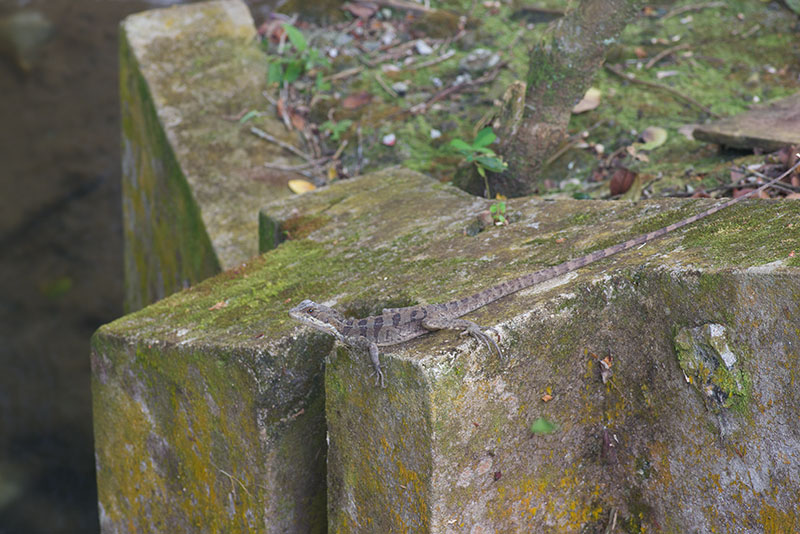
The first morning we visited the Serpentarium and talked to Mario about where to go herping. He gave us a little advice and we also signed up to go out with him the following night. Then Lorrie and I headed out in our rental car to see what we could find during the day. El Valle is situated in the crater of an old volcano, with some good forest mostly around the crater edges. (It's on the spine of the country, so it has a mixture of Pacific side and Caribbean side habitats and fauna.) We drove around the edge of much of the crater to scout the place out. We knew of a trail leading off of the main road, with enough room to park a couple of cars, so we stopped there to try our herp-finding luck. A small stream ran along the trail, which looked promising. Here's a view from the streambed back across the road.
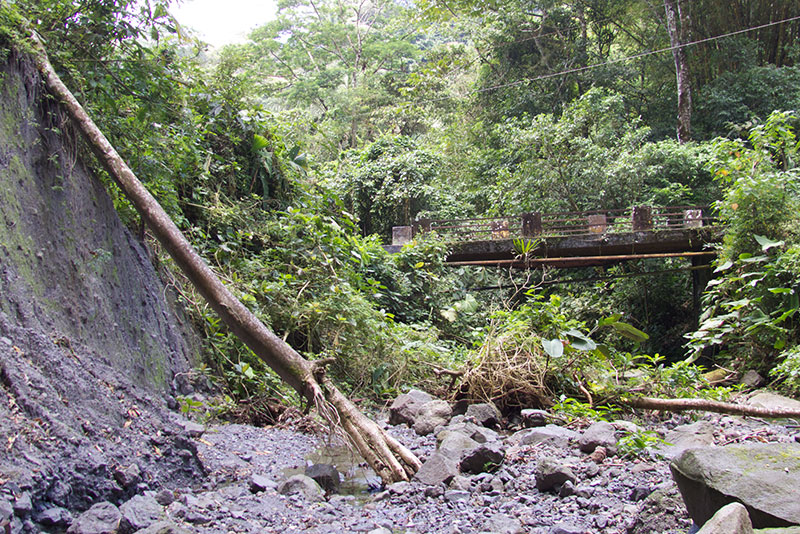
On the boulders along the stream some small poison dart frogs were hopping about. I believe these are Highland Rocket Frogs, Silverstoneia nubicola. These are among the less spectacular dendrobatids, but they are still dendrobatids, therefore they are still pretty cool.

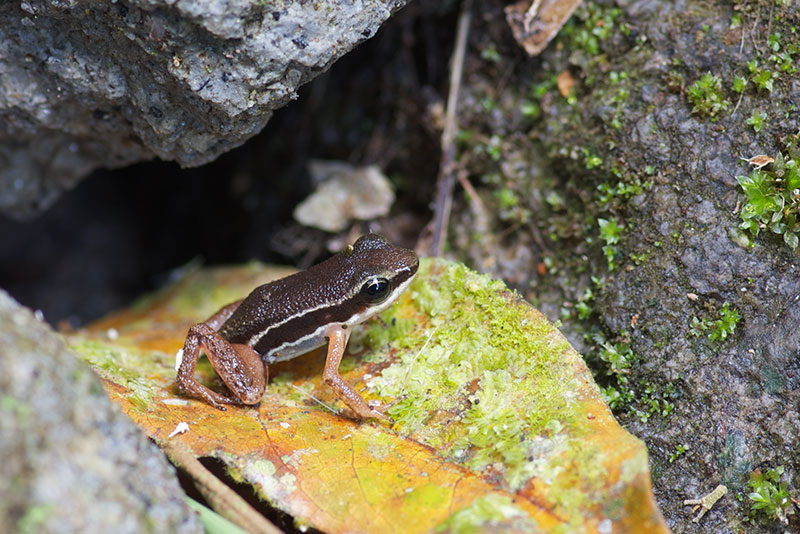
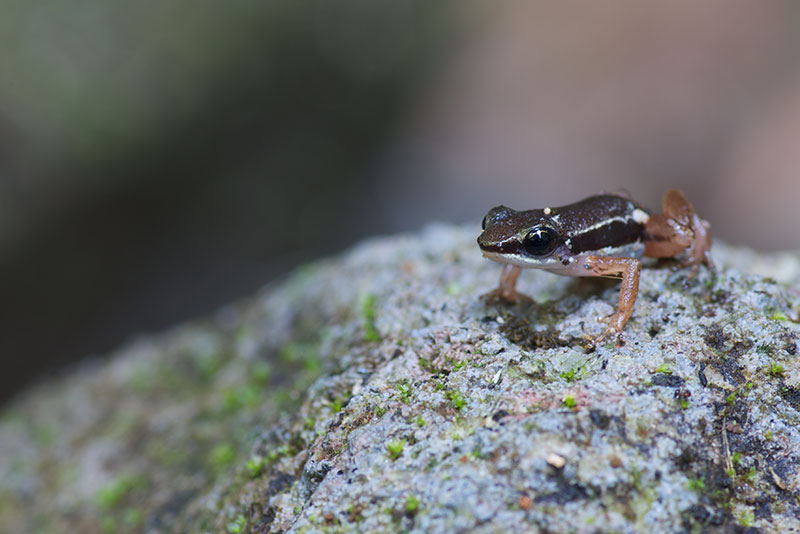
We saw just one other frog around the streambed. I suspect this one is a Slim-fingered Rain Frog, Craugastor crassidigitus.
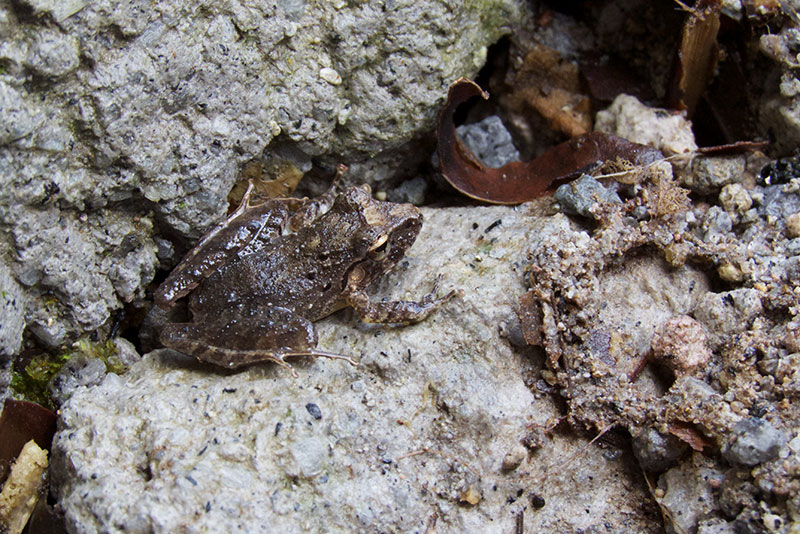
After we seemed to have exhausted the streamside possibilities, we headed up the trail for a short while. We thought we heard a lizard or two in the leaf litter, but didn't see anything clearly. We did see one more little brown frog, smaller and considerably bumpier than the previous one. Unfortunately I didn't have my good macro lens with me, and so didn't get any particularly good photos. From the W-shaped ridge on the shoulders and the tuberculate skin, my best guess is that this is a Horn-nosed Robber Frog, Pristimantis cerasinus.
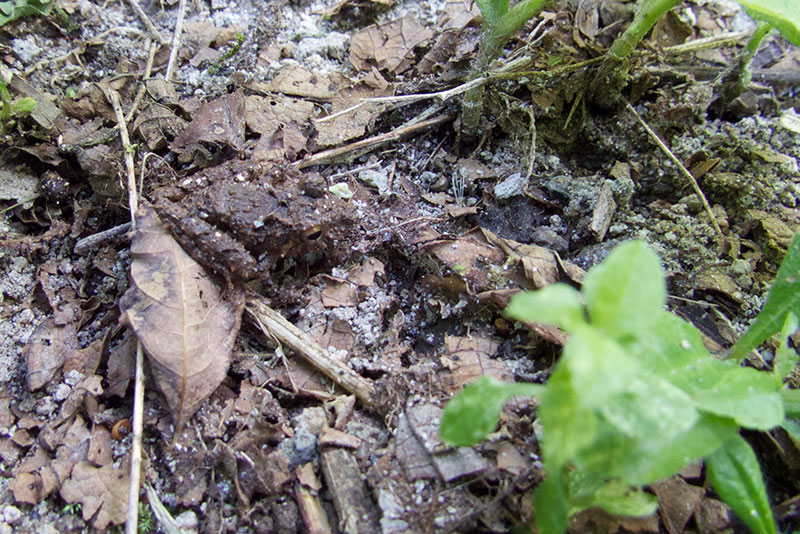

The rest of the afternoon we scouted out places to try the next day, and had the world's slowest lunch. At night we tried a little road cruising when it got dark. We had been warned by Mario that road cruising was not a productive approach here, and he was in fact right. We're pretty sure we saw two small lizards right at dusk, though both disappeared before we could identify them. And that was that.
After the road cruising failure we headed back to try the trails in the forest behind Hotel Campestre. First stop was at a creek right at the edge of the cleared area. We had seen tadpoles there by day, and assumed that we would see frogs by night. And indeed, there were frogs. The most numerous species was the Brilliant Forest Frog, Lithobates (Rana) warszewitschii. These pointy-nosed ranids are sometimes all brown, and sometimes brown with green backs. They have bright red/orange flash marks on their thighs, presumably the source of their English name.
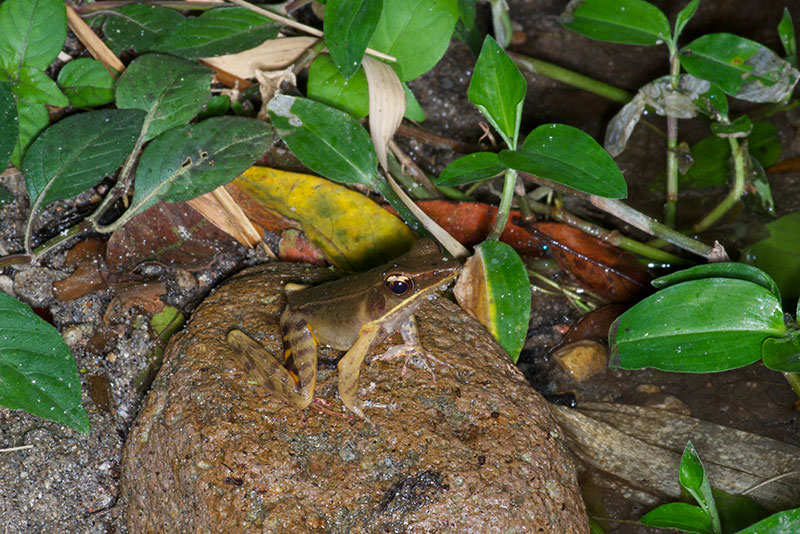
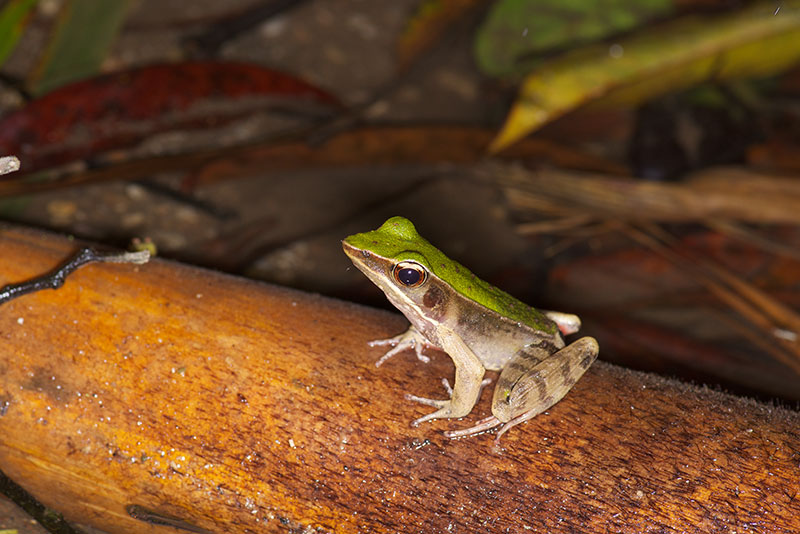
Mixed in with the many L. warszewitschii were a few treefrogs, which I (and Mario) believe are Pug-nosed Treefrogs, Smilisca sila.

A few of the streamside boulders sported Yellow-flecked Glass Frogs, Sachatamia (Centrolenella) albomaculata.

While scanning the stream edges for more frog variety, my eye caught something that appeared to be a different froggy shape on a boulder facing the water. I snuck closer to realize that it was in fact not a froggy shape but a snake-heady shape; a Central American Lancehead (Bothrops asper) was lurking in an ambush position mostly under the boulder, with just its head exposed. Unfortunately it noticed me coming, pulled its head back, and retreated to its hiding place under the boulder. But we wanted pictures, so I rolled the boulder and Lorrie used her tongs to gently extract our new fer-de-lance friend. It didn't want to sit still initially, but eventually it changed its mind and rested in the sand for a few photos.
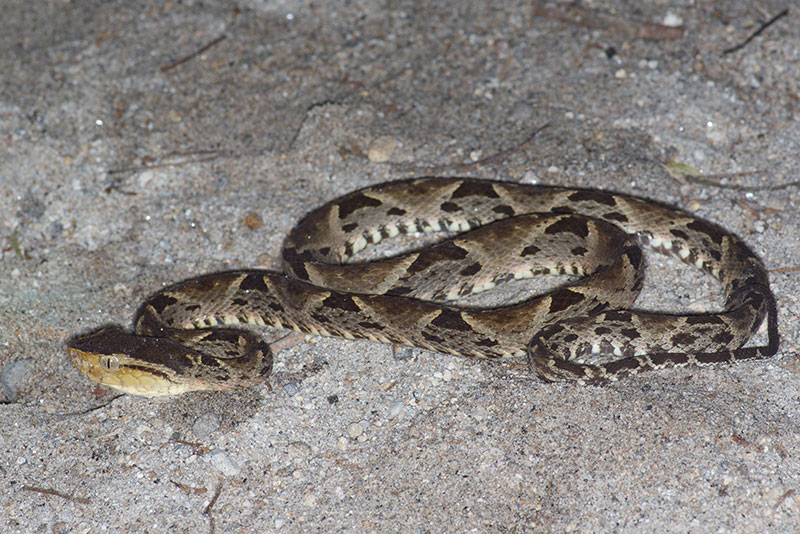
After returning the snake to its hiding place under the (now restored) boulder, we headed down the forest trail. I took a few photos of invertebrates while we scanned the vegetation and ground for herps.
An as-yet-unidentified butterfly:
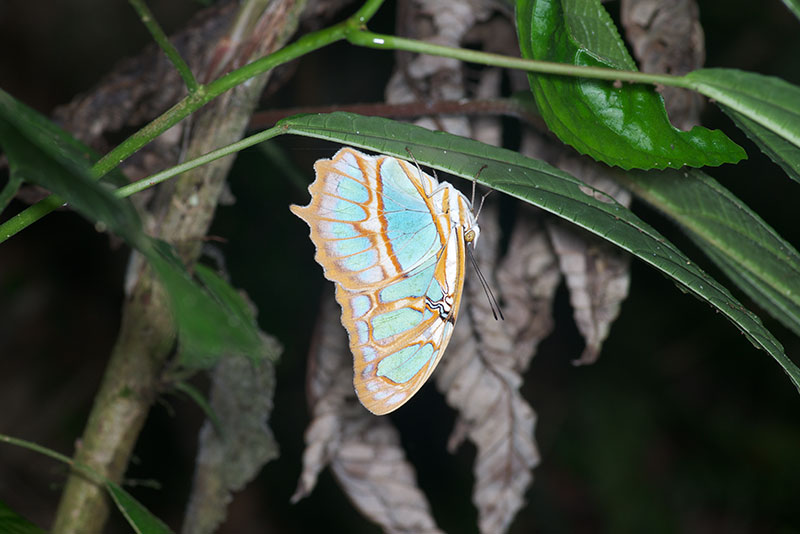
A couple of very large spiders. I suspect these are both Cupiennius, perhaps Cupiennius getazi. Spiders in this genus are not particularly harmful to humans, but are often confused for the very dangerous spiders in the genus Phoneutria. See, for example, this article from American Entomologist. I know what you're thinking: "What? Why is there an article about spiders in American Entomologist? Don't spider people have their own journal?"
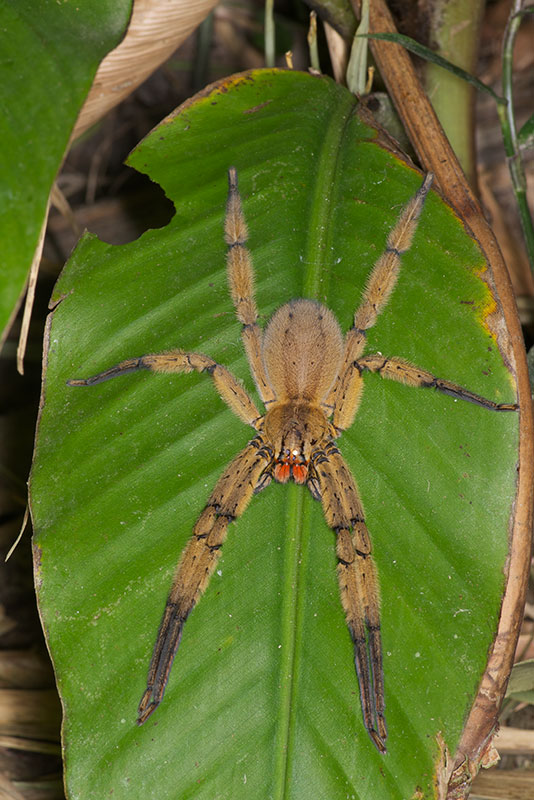

With an altitude of about 2,000 feet, El Valle was not steamy and hot at night the way Amazonia is. It was in fact cool enough at night (maybe high 60's) that we had been a little worried that we wouldn't find any reptiles. The fer-de-lance proved that theory wrong, and not too long afterwards we uncovered from beneath a log this little Litter Gecko, Lepidoblepharis xanthostigma. (Kudos to Jake Scott for identifying it from a Facebook photo before I got home to do some ID research.)
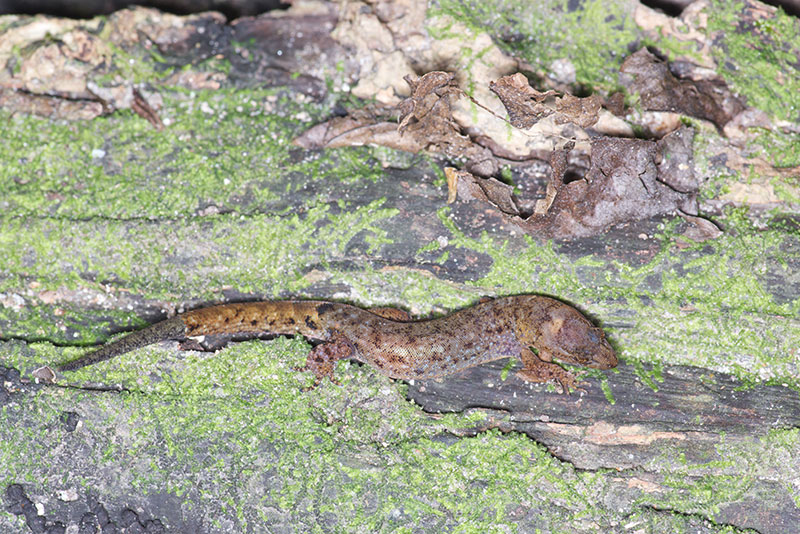
A little while later Lorrie called out: "John, you have got to come see this!" I hurried over to see this beautiful Eyelash Viper, Bothriechis schlegelii, as shown here (in situ):
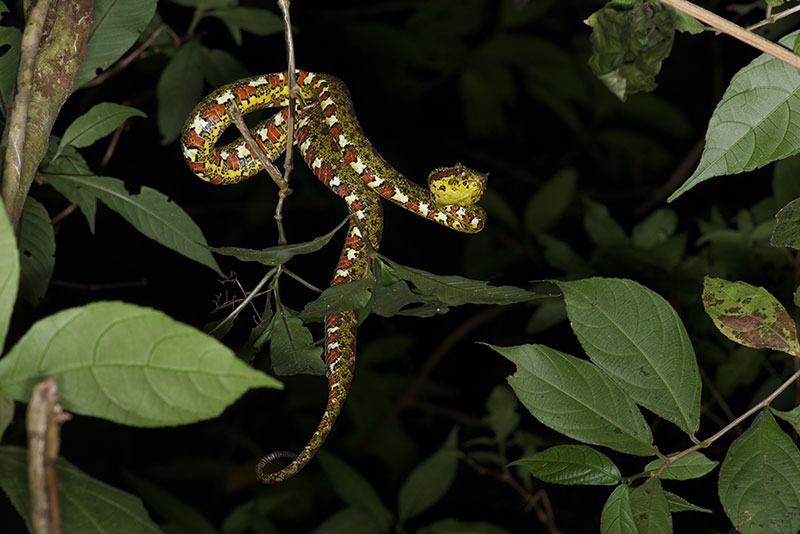
After a few photos in this pose, the snake decided to head elsewhere, but we were not done capturing its soul in pixels, so Lorrie grasped it with her tongs and placed it on a lower branch. We were (and are) somewhat befuddled by its color scheme. When viewed from above, it disappears into the vegetation with fantastic camouflage. When viewed from below, it screams out like a Candyland fire engine. Doesn't the eye-catching belly pattern significantly reduce the value of the camouflaged dorsal surface? Hmm.
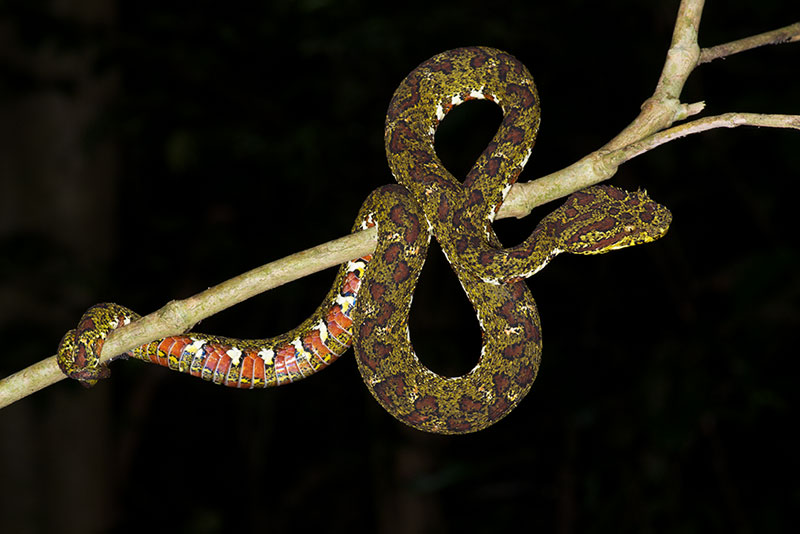
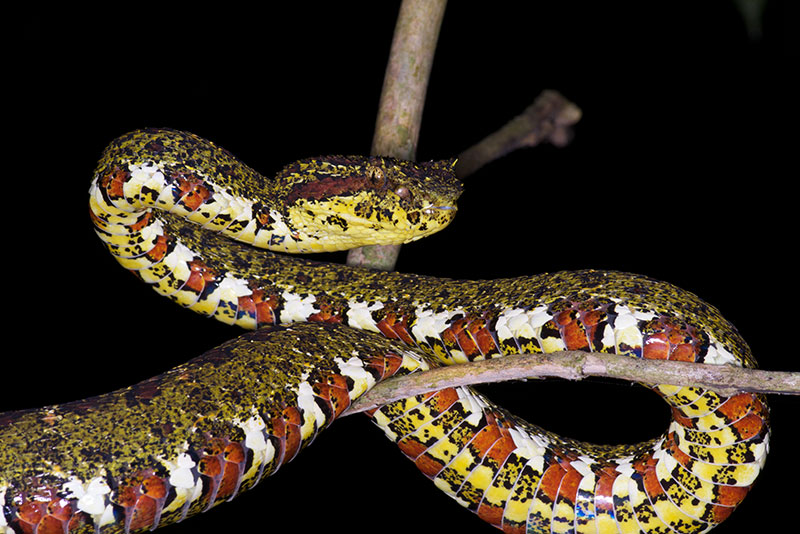
We started the next day with a visit to the local zoo because we wanted to visit the stars of its Amphibian Conservation Center, the Panamanian Golden Frogs, Atelopus zeteki. This species was once common in El Valle, but its wild populations were devastated when the chytrid fungus swept across Panama in the mid-2000's. (Marty Crump's book "In Search of the Golden Frog" tells some of this tale.) The last known wild individuals were captured to start a breeding program with the hopes of eventual reintroduction. They are now officially considered extinct in the wild, though Mario said that there continue to be occasional reasonably reliable sightings.
The golden frogs that were on display occupied a large showpiece terrarium, and looked healthy enough in there. We had some thoughts of tricking Dick Bartlett into thinking that we had seen a wild one with our photos, but we didn't think he'd fall for it so we abandoned the plan.
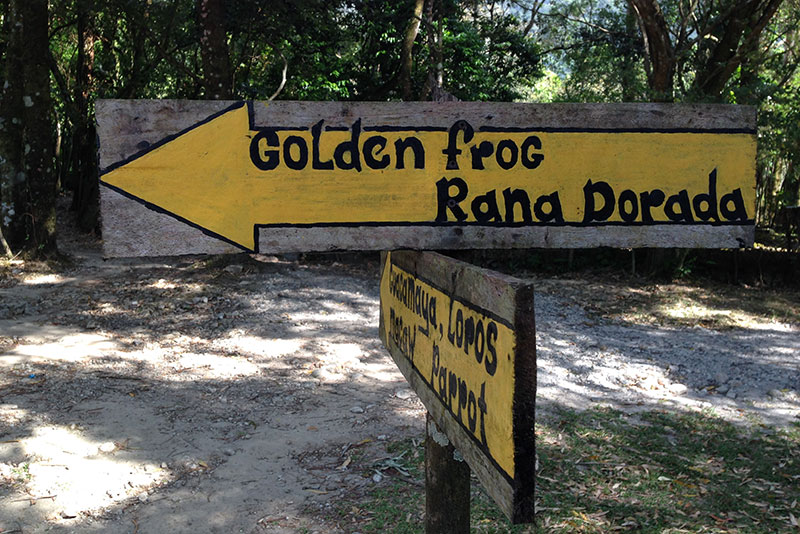
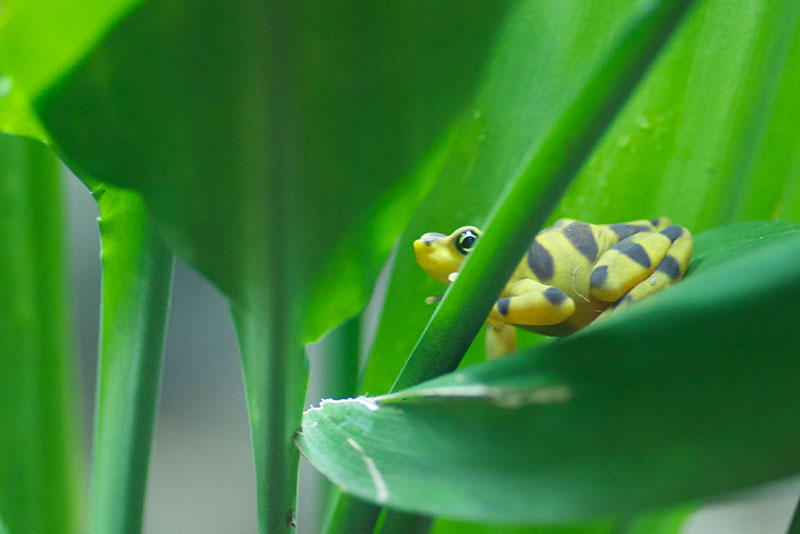
Our main event for the day was to hike and herp in the Cerro Gaital Nature Monument. Here's the entrance station. Note the oh-so-detailed map on the wall.
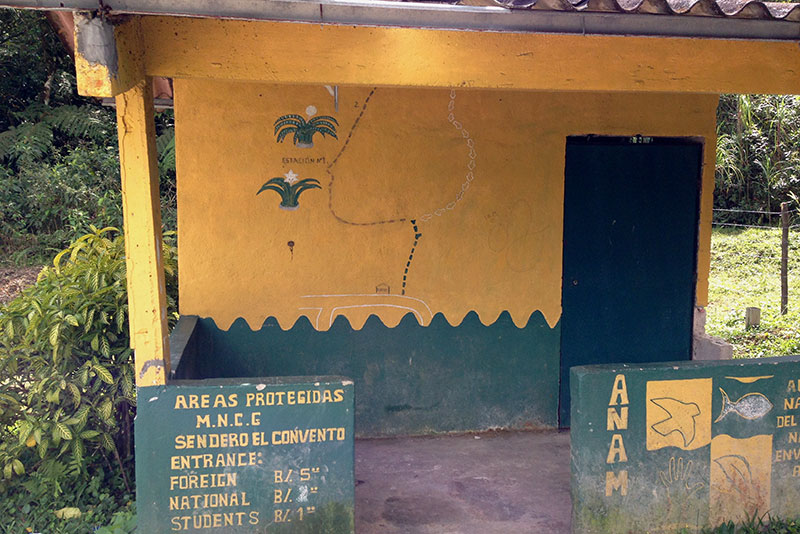
Interpretive signs along the trail could have used a little modernizing.
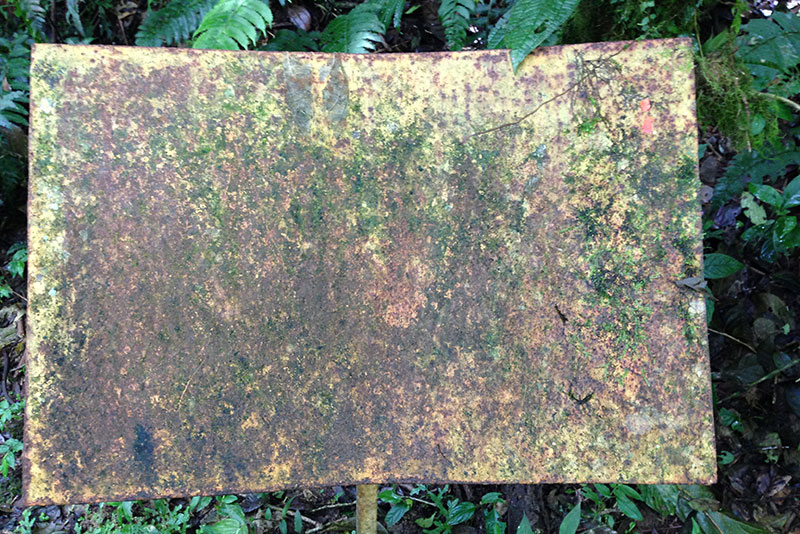
The trail started out wide and gently rising.
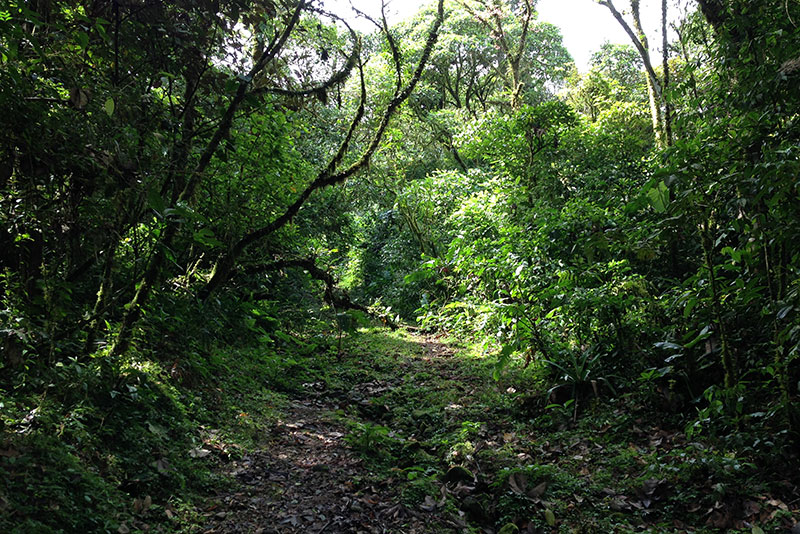
However, the trail soon became very steep. It climbs to the top of the volcano's caldera, from where there is a long view towards the Caribbean side.
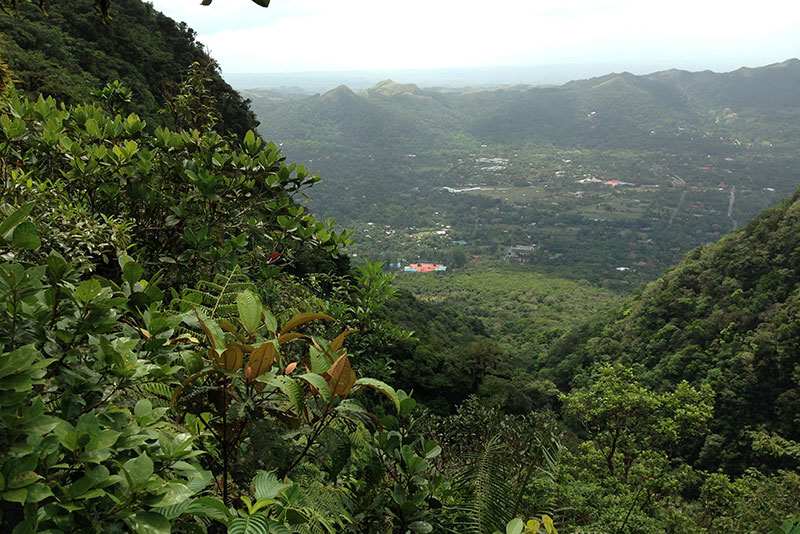
The first interesting critter we noticed on the trail (not counting the ubiquitous leaf-cutter ants) was a butterfly whose lower wings were so brightly patterned that I stared at it for quite awhile before I could be sure it wasn't a piece of colorful trash, and then for even longer before I could actually see the butterfly shape.
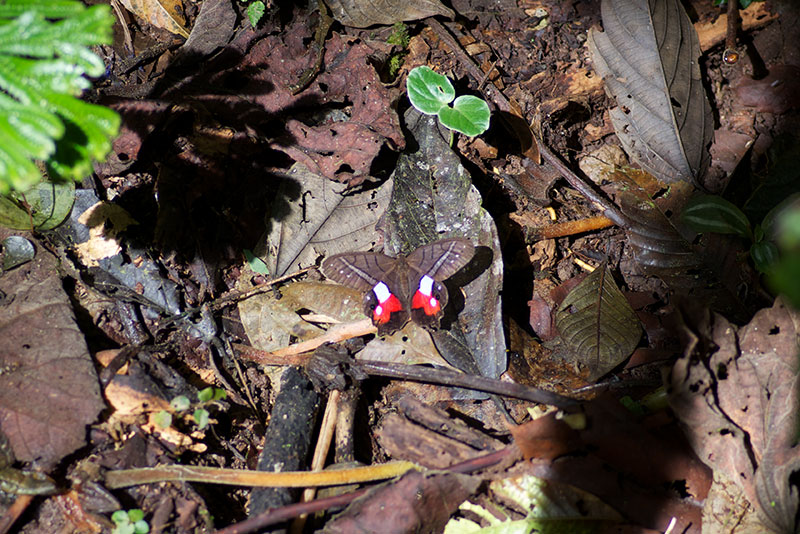
The hike was beautiful, but not too productive herp-wise. We did see a few small, fast Anolis, all of which escaped almost instantly except for this one. Mario identified it from the photo as a Ground Anole, Anolis humilis.

I also found a single small frog hopping across the trail. I'm pretty sure this is a Pygmy Robber Frog, Pristimantis ridens.
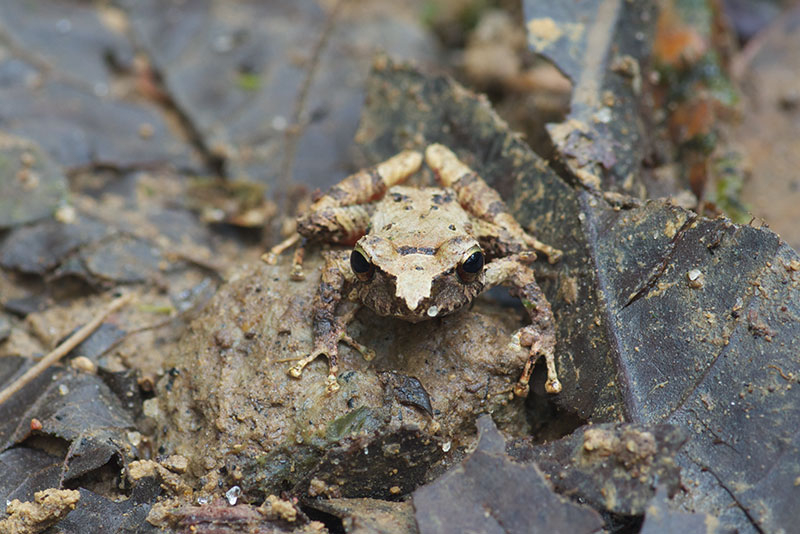

In the evening Mario picked us up at our hotel and took us on a hike through private property that is owned by friends of his and scheduled to become a nature reserve. Along a stream we saw several of these large and long-leggedy spiders, which I think Mario called "frog-eating spiders". I have since tried to identify them further, to no avail. Please let me know if you recognize this spider.

We came across a scorpion, and Mario had brought a black light, so we had no choice but to see what the scorpion looked like under the black light. Which was this:
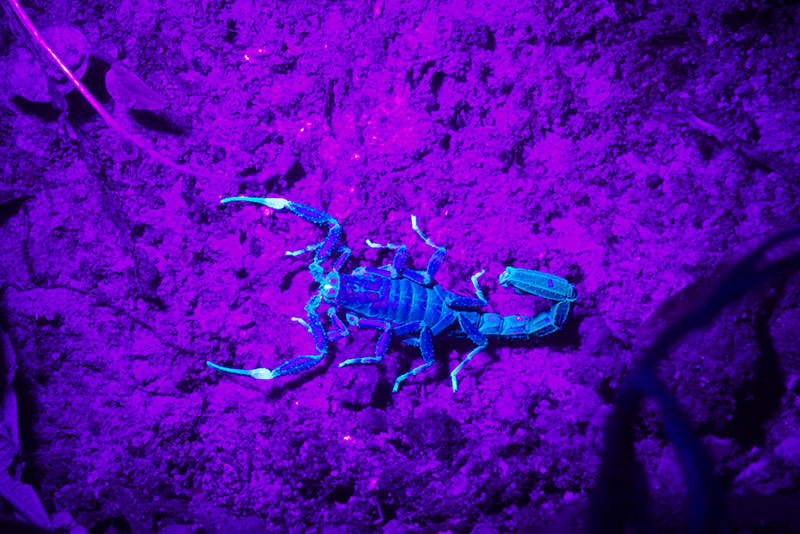
The only lizards we saw were a couple of Anolis species. One, which we only saw high up, sleeping on a twig, was the Neotropical Green Anole, Anolis biporcatus. The other species was the Stream Anole, Anolis lionotus. These anoles surprised us (well, at least Lorrie and me, probably not Mario so much) by dropping into the water when disturbed, then making it to a downstream boulder by some combination of swimming and being carried by the tide.

The most common frog on this hike was our treefrog acquaintance from the previous day, Smilisca sila. Males were smaller and boldly patterned; females were larger and relatively plain.
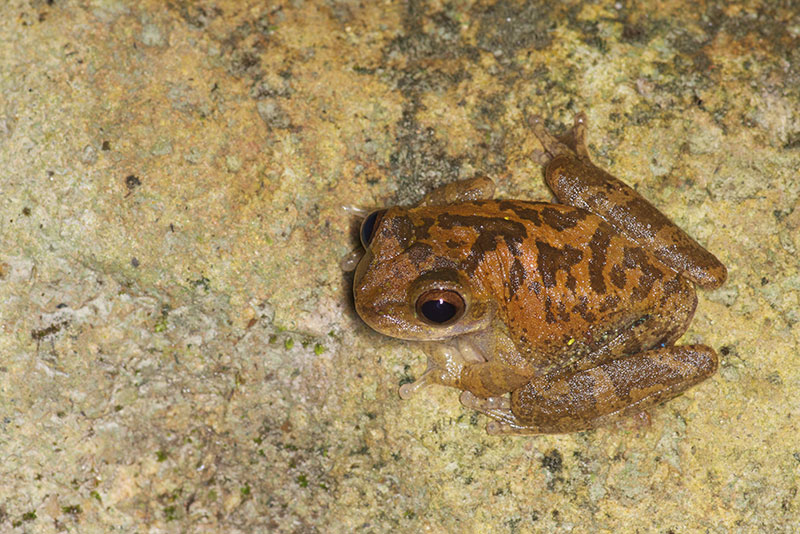
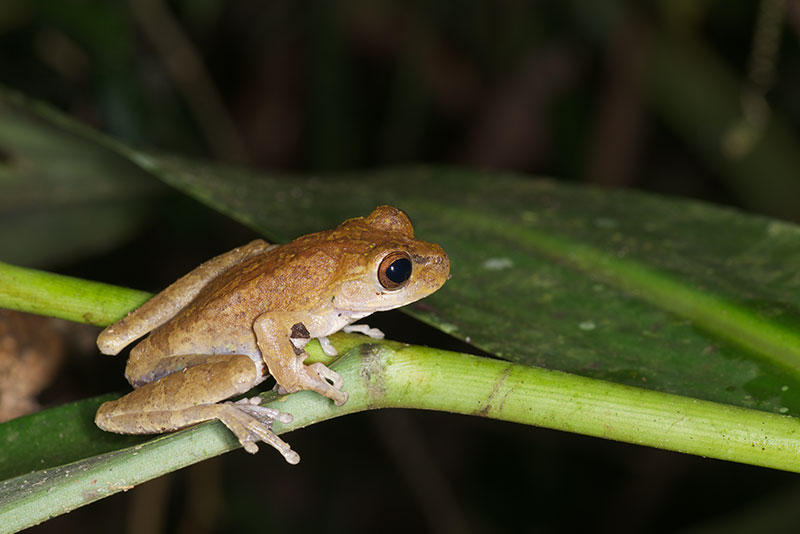

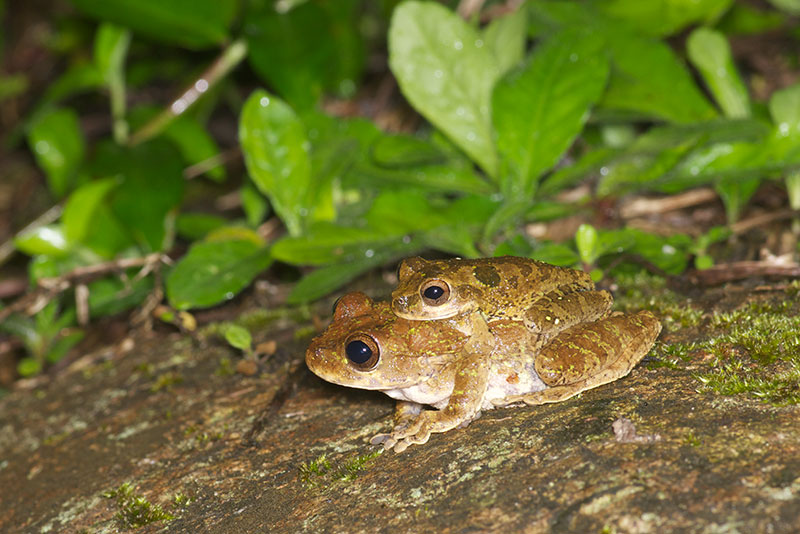
Mario identified most of the leaf-litter frogs we saw as Slim-fingered Rain Frogs, Craugastor crassidigitus, including these two:


The best frogs of the evening were the orange-striped False Poison Frogs, Pristimantis gaigei. We saw three of these, but the first two escaped quickly. We managed to get the third one to sit still long enough for a few photos.


At one point Mario got excited when he spotted a salamander in the leaf litter. Lorrie and I both got a quick glance at it, just as it disappeared surprisingly quickly under a leaf. Mario started pulling leaves off the ground one by one, checking that the salamander wasn't clinging to the leaves, and then discarding them in a pile. The leaf litter wasn't very thick, so this seemed like a viable means of locating the vanished salamander, and I joined in. After a few minutes we had cleared all of the leaves from a couple square feet of forest floor, with still no sign of salamander. We expanded our area of interest, and pulled more and more leaves away. We never did see that salamander again, but I did uncover a small, brightly-colored snake, which Mario cheerfully identified as a (venomous, of course) Many-banded Coral Snake, Micrurus multifasciata. It was probably too small to actually bite a human, but that didn't prevent Lorrie from going on and on about my dubious technique of finding coral snakes by hand.

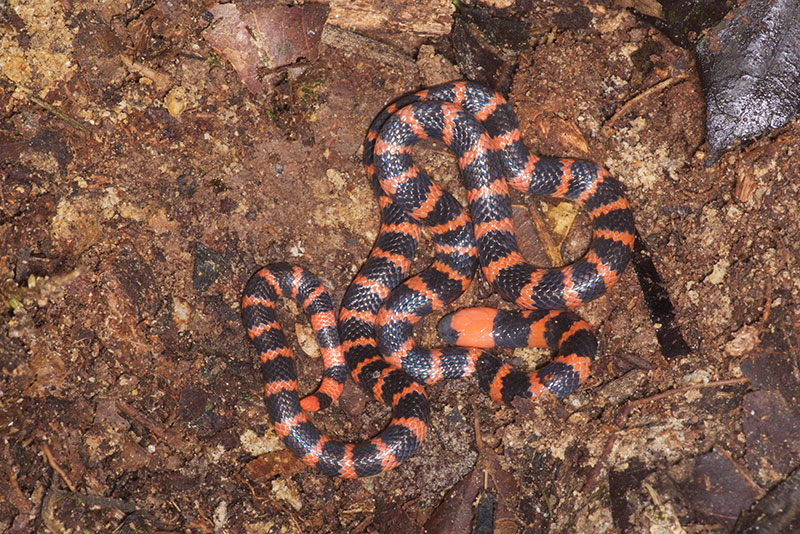
The coral snake was the highlight of the evening, and the herpetological finale of our brief trip. Lorrie and I had a great time, and we'd definitely recommend the El Valle area for a herpetological getaway. We didn't see tons of species, but we saw some good ones, and we were only herping for a couple of relatively easygoing days.
John